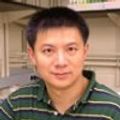Deregulation of ACK1, a non-receptor tyrosine kinase originally identified by its ability to bind to GTP-bound Cdc42 (hence the name: activated Cdc42-associated kinase)(Manser et al., 1993), correlates with the ability of primary tumors to metastasize (Mahajan et al., 2007; Mahajan et al., 2005; van der Horst et al., 2005). To understand how specific mutations in ACK1 promote oncogenic processes, we have used Drosophila to investigate the roles of Ack family kinases during animal development. The general domain organization of Ack family genes includes a N-terminal SAM (sterile ? motif), tyrosine kinase, SH3 (Src homology 3), CRIB (Cdc42/Rac interacting binding domain), proline-rich region, and C-terminal UBA (ubiquitin-associating domain). Like mammals, Drosophila has two Ack homologs, dAck and dPR2, differing by the presence of the CRIB domain. Although dAck is more similar to ACK1 in amino acid sequence, it lacks the CRIB domain, raising the question whether dAck is a true homolog of ACK1. Using molecular genetics, we show that dAck is the functional homolog of ACK1 and its tyrosine kinase activity is essential for spermatogenesis in a cell autonomous manner. dAck forms a complex with Dock (dreadlocks, the Drosophila homolog of Nck), and its kinase activity is critical for Dock subcellular localization in differentiating male germ cells. Based on these results, we propose that dAck, via SH2-phosphotyrosine interaction, recruits Dock, which assembles multi-protein complexes with its SH3 domains to specific sites to promote sperm morphogenesis.




